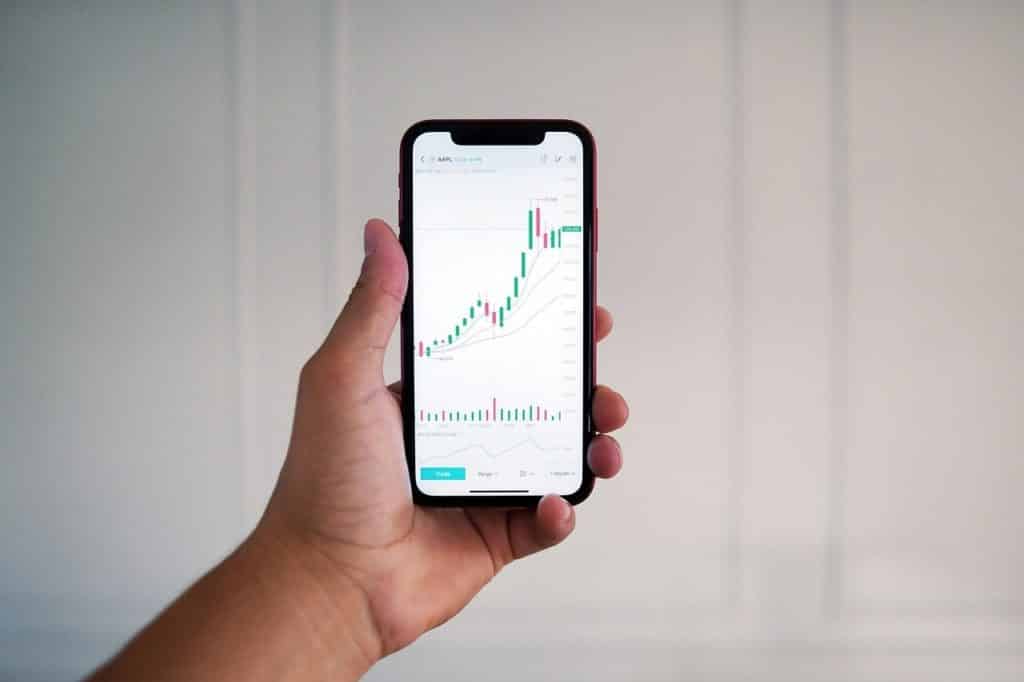
Day trading as a side hustle – pros and cons
If you want to invest in the financial markets, you should know that there are several trading styles. Among them, Day Trading. As its name suggests, this strategy is based on making various trades during the same session. If you are considering day trading as a side hustle we will show you what this business entails, and what are its pros and cons. But first, let’s see what day trading actually is and how it works.
What is day trading?
Defining Day Trading in a nutshell is that it is a style of trading that involves buying and selling financial instruments (which can be in the form of stocks, options, currencies or futures contracts) during a single trading day.
In other words, it is a short-term investment strategy that consists of closing all its positions before the markets close: all the positions created by a day trader are closed on the same trading day.
We open and close one or more positions during the same session before opening others the next day. In this context, instead of talking about Day Trading, we can also use the terms, session trading or even session speculation.
This type of strategy is opposed to the classic “Buy and Hold” strategy, which consists of buying securities and holding them for the medium or long term and then reselling them at a high price.
The main objective of Day Trading is to multiply potential small gains to achieve an overall positive trade at the end of the day.
The Day Trader is thus often satisfied with gains of between 0.5 and a few percent on each transaction, but he compensates by placing many orders per day, sometimes up to several dozen. It also seeks to make more winning trades than losing trades, ensuring that you lose as little as possible on losing trades.
How day trading works
In general, Day Trading applies mainly to assets that show high volatility. Also, this style of trading is usually associated with markets that have set closes. In fact, the most suitable markets for Day Trading are stocks, indices, cryptocurrencies or even Forex investments.
Day trading strategies
Within Day Trading itself, there are several investment strategies, including:
Trend trading, which consists of analyzing the direction of asset prices and buying or selling according to the trend observed;
Scalping, which is based on purchases and sales over a very short period of time (a few seconds or a few minutes) in order to take advantage of micro-variations in price;
Swing trading, which tries to detect in advance and take advantage of small reversals in short-term price changes;
Mean reversion, which is based on the theory that prices always return to the historical average.
Day trading strategies are logically different from longer-term trading strategies in that they focus primarily on the profits from short-term market movements rather than medium to long-term potential.
Be careful, as always in the financial markets, none of these strategies guarantees a return for sure. It is therefore appropriate for everyone to opt for the strategy best suited to their needs and ambitions, being aware of the risks of loss incurred. The capital invested may be partially or totally lost.
Day trading as a side hustle – is it viable option
The pros of day trading
The main advantage of Day Trading is to allow investors to speculate on a wide variety of markets and to pocket gains quickly and regularly. In particular, unlike traders who invest for the long term, day traders can generate profit even on a falling stock thanks to short selling, which consists of selling a stock with a view to buying it back later.
Moreover, with a very short position in the markets, there is generally less risk of experiencing an unexpected change.
Finally, Day Traders, although they must remain vigilant, do not need very technical knowledge to engage in this style of trading. Some do not take the time to study the financial health of a company and its projected profits to make decisions.
The Cons of Day Trading
This style of trading requires a lot of time and a high level of dedication to the market: in fact, beyond buying and selling multiple assets during the same session, day traders buy and sell several times during the same session. Clearly, they follow the slightest price variations throughout the day to enter and/or exit a market at the best possible time.
In addition, Day Trading requires concentration, great flexibility and determination:
This technique involves taking decisions quickly and placing a large number of orders each day for an often relatively small gain on each transaction.
Finally, it is important for investors to master the operating rules of the markets in order to make the best possible decisions at the right time.
In other words, Day Trading is generally not suitable for casual or beginner investors because the goal is to be very active in the markets and to always try to stay one step ahead.
And like any activity on the market, Day trading involves a risk of total or partial loss of the capital invested.
How To Profit from Day Trading as a side hustle?

To practice Day Trading, two conditions must be met: market liquidity and volatility must be high. In other words, you must be able to enter or exit the market at any time, with a counterparty ready to buy back your assets or sell them to you, and there must be significant price variations for you to be able to generate profits during the session.
Also, to succeed in this style of trading, it is necessary to know how to use technical analysis, an analysis method based on the study of technical indicators (often more relevant in this context than fundamental analysis, which makes it possible to evaluate the intrinsic value of an asset and to analyze the factors that may influence its future price, as mentioned above) and thus be able to study stock market charts to understand price variations.
Finally, it is important that the investor closely follows all the news that can potentially influence the markets in order to be able to act quickly in the event of variations.
Day trading as a side hustle – simple tips ad tricks
The question of capital is fundamental when you want to become a home trader. Indeed, the amount you have will determine your ability to generate money. The higher it will be, the more you will have the possibility of quickly generating significant profits.
What capital to get started?
You must allocate part of your personal wealth to your activity, which is called “starting capital”. It should neither be too high nor too low. In effect :
- if it is too high, you run the risk of losing a lot of money if you make the wrong choice;
- and if it is too low, you will be very limited in strategies and operations, and you will not generate any profit without taking excessive risks.
This is why we invite you to invest a minimum capital of €1,000 when you are a beginner
and you want to get serious about the business.
In this way, you will have a sufficient amount:
- to apply a good and effective strategy without brokerage fees cutting down your performance too much;
- and not to take excessive risk of losing your money because of your lack of experience or the temptation to seek too large gains.
If you don’t have this minimum capital, don’t worry. You just need to start with just a few hundred dollars with less risky and longer term Passive Management strategies.
Obviously, a home trader must be ready to lose a small part of what he will invest in the stock market at any given time.
With a good method and good risk management, only a small proportion of your capital should be exposed to market risks. By doing things right, you will never lose a big sum of money or a lot of small ones.
The most common mistake retail traders make
Poor management of emotions
Financial markets are almost exclusively driven by emotions. Even professional traders with decades of experience behind them make bad decisions.
Of course, when you start as a complete beginner, then you can very quickly drown under this flood of emotions.
This is why it is important to start trading online slowly:
to gain experience at home;
and thus to have better self-control during stressful situations.
Bad risk management
As I said, the beginners think they can generate thousands of dollars very quickly with a very small starting capital, which pushes them to take enormous risks.
From time to time, these risks will pay off and:
they will multiply their capital by three or four in a few days or weeks;
then they will lose everything overnight.
If you do your own research on different stock market forums, you will realize that this kind of story is extremely common.
Risk management is therefore essential for the health of your portfolio.
This requires different solutions such as diversifying your assets so as not to put all your eggs in one basket and using stop losses.
Day trading as a side hustle – Conclusion
If you consider day trading a side hustle, you are on a good path to creating extra income. If you aim to take this activity seriously, we advise you to learn about the financial markets and trading as much as possible. The internet abounds with free learning resources and trading tutorials. Ensure you enter the market with a complete understanding of its opportunities and risks. Your success will depend on your discipline and ability to come up with a good trading strategy. And finally, don’t forget the good old advice: never invest more than you are comfortable losing.
Day trading as a side hustle FAQ
Can I make $100 a day trading?
Yes, it is. However, it takes time to grasp an adequate trading strategy. Also as a trader you have to keep a low trading cost. Therefore, choose the trading platform using a broker comparison tool that will help you narrow down the options.
Is day trading a good side job?
Day trading can be a good side hustle option. But it ultimately depends on your personality and ability to manage risk, emotions. Also, it takes at least several months of demo trading and learning so you can enter the market prepared.
Can you make money day trading with $1000?
$1000 is a good capital for starting day trading activity. This is especially true regarding Forex trading. You can start even with less since some brokerages require an initial deposit of a modest $250.
How much can day traders make?
In the US day traders can make around $165 000 per year on average. The top 10% earn around 197 000 and the bottom ten earn under $70 000 per year.






